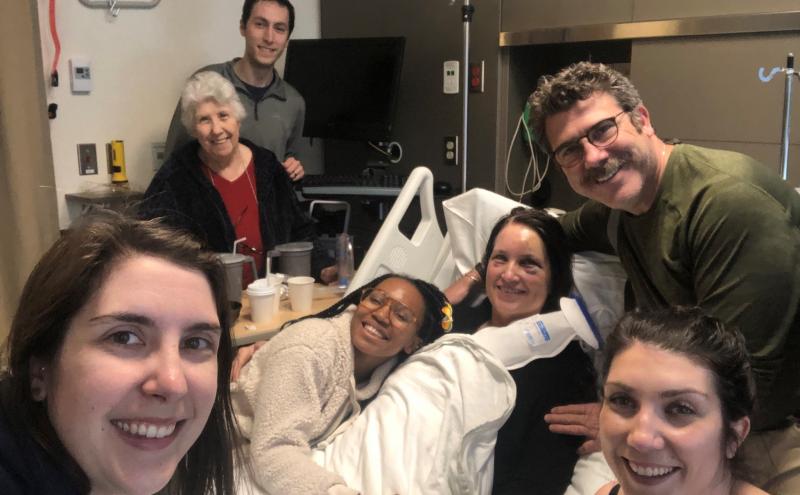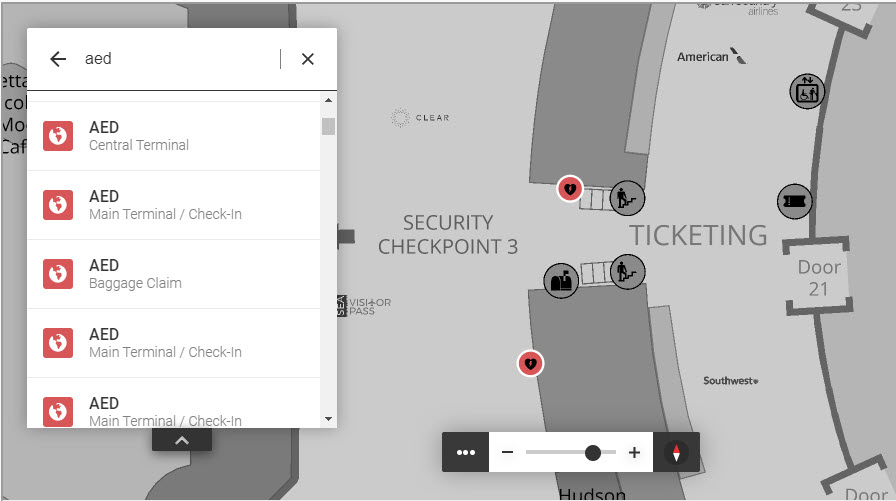
Kathy Winkle’s cardiac arrest came out of nowhere.
She and her husband Kevin had just landed from their trip to Cambodia and the Philippines and they were making a mad dash through Sea-Tac Airport to catch their flight home to Alaska.
Kevin turned around to say “hey we made it!” He was shocked to see Kathy collapsed on the floor.
Kevin, a medical doctor, knew how to respond and moved quickly. He called out for an AED (automated external defibrillator) — a lightweight, portable device that delivers an electric shock through the chest to the heart. In less than a minute someone found one located three feet away. Another bystander called 911. A nearby physician’s assistant and another man worked to give her chest compressions while her husband performed the breaths.
The Port of Seattle Emergency Medical Technicians, EMTs along with King County Medic One arrived shortly thereafter, and were able to stabilize her and transport her quickly to the hospital.
Kathy’s daughter, Kate Allevato, and her siblings rushed to Seattle to be by her side. Thanks to the close proximity of the AED and swift response by bystanders and emergency response personnel, Kathy is alive and healthy.
“Thank goodness she was where she was,” Kate said. “Even if you don’t know CPR and are not a medical person you can use an AED. There are simple instructions and you could save someone’s life.”
Quick response time
Sea-Tac Airport has the distinction of being one of the safest places in King County to have a heart attack. In a recent study completed by King County Emergency Medical Services the Port of Seattle Fire Department (POSFD), on a five-year average has a 47 percent save rate when an AED is used, compared to all of King County’s save rate of 10 percent.
Jason Schnase, POSFD Training Chief, said a contributing factor for Sea-Tac’s high save rate is that most airport collapses are witnessed by somebody else in a public place. When this happens, bystanders or emergency personnel can administer CPR and call 911 quickly. In an emergency situation, every second counts.
“There are usually witnesses and people who can get on it right away,” he said. The fact that Port of Seattle EMTs are located at the airport also contributes to the higher save rate. Schnase estimated that the EMT response time to a medical call at Sea-Tac is about three minutes.
AEDs at Sea-Tac
Easy access to AEDs across the airport are a major factor in the success of lifesaving efforts. There are close to 170 AEDs located throughout the terminals equipped with instructions that anyone can follow to help save a life. You can locate them before your visit in the Sea-Tac interactive map by searching for "AED."

Kate said since her mother’s cardiac arrest, she now looks for the nearest AED everywhere she goes.
“I was amazed once I started looking how many I found, especially in airports,” she said.
The American Heart Association reports that nine in 10 cardiac arrest victims who receive a shock from an AED within the first minute live.
“Ever since this happened I have learned so much more about heart health and am super passionate about people learning more about AEDs and CPR,” Kate said.
- Watch a video from the American Heart Association on how to perform hands-only CPR.
- Or a video on how to use an AED from the American Red Cross.
Well-Trained Citizenry
Port of Seattle Fire Department EMTs participate in the King County Medic One System, an advanced concept of medical care that is world-renowned for its focus on the active participation of citizens in the life-saving process.
The Medic One System empowers community members to:
- Recognize when a fellow citizen needs medical care
- Call 911 to activate the Medic One System
- Help a family member or neighbor until Medic One arrives
The Port of Seattle Fire Department also offers an aggressive CPR training program for civilians. The department also offers free training to Port employees, airline employees, and other groups.
Find out how to receive CPR training from KingCounty.gov.




